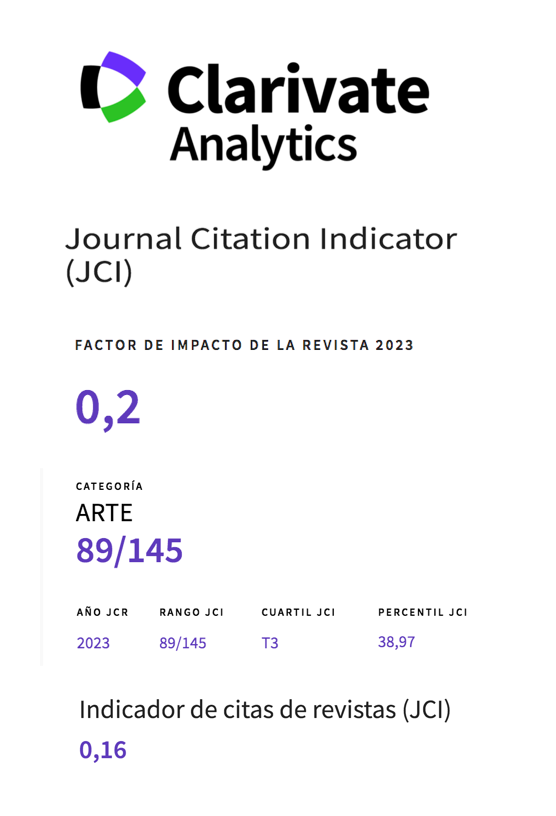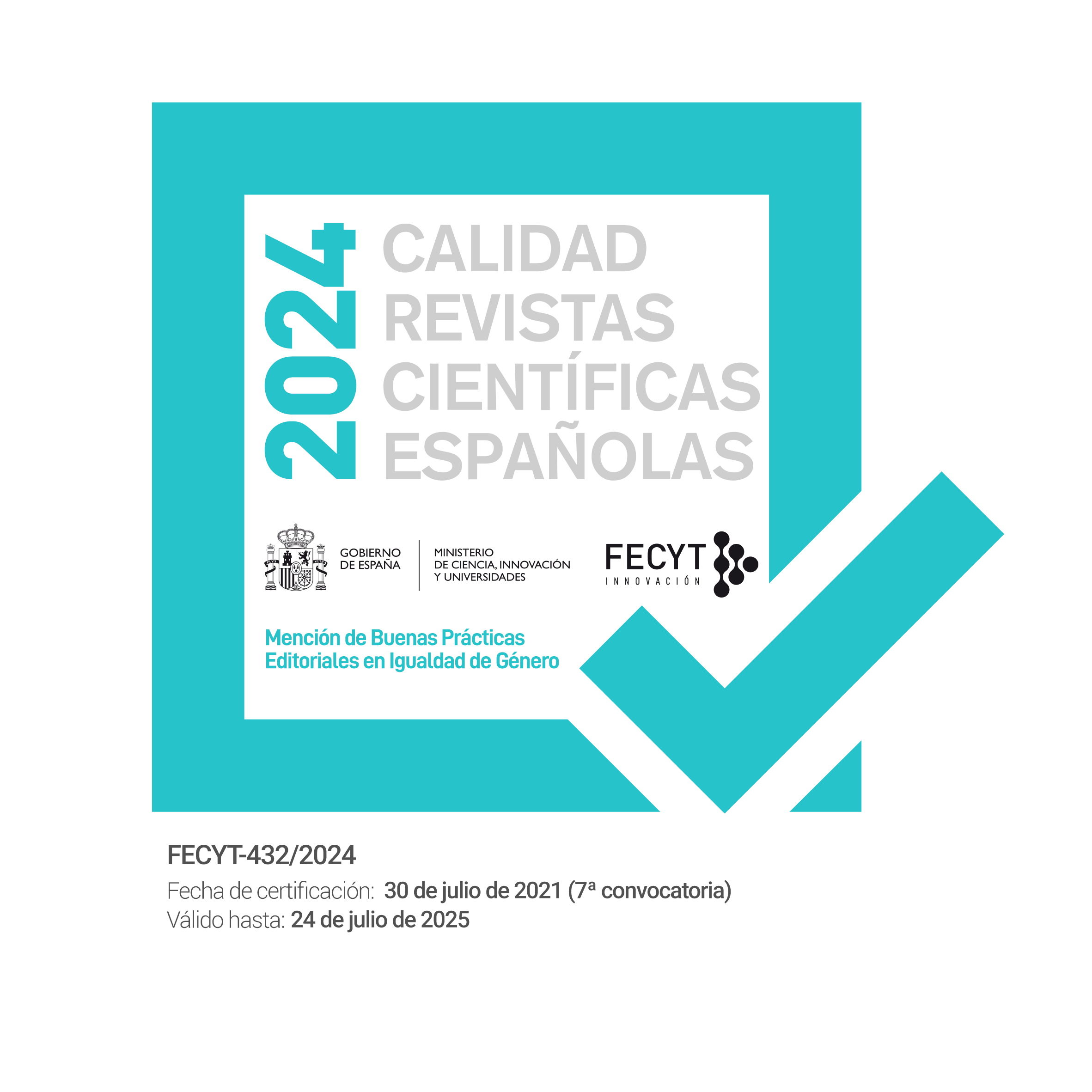A Decade of Feminicides in Spain: An Aproach Through the Information Visualisation Via AREA
Abstract
Violence against women is one of the main threats that women face in our societies. Feminicide involves death and thus constitutes the ultimate and irreversible form of this violence. This article shows the feminicides in the Spanish State in the last decade. These become visible through the on-line interactive tool AREA. These vizualisations seek to promote the analysis and social and political awareness of violence against women. Thus, cases of feminicide can be displayed in pictograms in a simple, accessible, but disturbing manner. The results show that in the past decade feminicides did not stop. Each week, about two women have been murdered by a man very close to them. Thus results in fatal consequences for women, but for their children and the society as a whole as well.
Downloads
-
Abstract1063
-
PDF (Español (España))482
References
Berganza, M.R. (1993). Laconstrucción mediática de la violencia contra las mujeres desde la teoría del enfoque.Comunicación y sociedad: Revista de la Facultad de Comunicación.Vol. 16, No2, 9-32.
Campbell, J.C. Glass N, Sharps PW, Laughon K, y Bloom T. (2007). Intimate Partner Homicide: Review and Implications of Research and Policy.Trauma, violence and Abuse, 8, 246.
Caputi, J; Russell D.H. (1990). Femicide: Speaking the Unspeakable. Ms.: The World of Women, 1(2), 34-37.
Dürsteler, J.C. (2002). ¿De qué va la visualización de la información? La revista digital de Infovis.Net. N.100. 2002. Recuperado de [http://www.infovis.net/printMag.php?num=100&lang=1]
Ferrer, V, A.; Bosch, E. y Riera, T. (2006). Las dificultades en la cuantificación de la violencia contra las mujeres en la pareja: análisis psicosocial. Intervención Psicosocial, Vol 15, No2, 181-201.
Frye, V., Hosein, V., Waltermauer, E., Blaney, S. y Wilt, S. (2005). Femicide in New York City: 1990 to 1999. Homicide Studies, 9, 204-228.
González-Mendez, R. y Santana-Hernandez, J.D. (2012). Professional Opinions on Violence Agains Women and Femicide in Spain. Homicide Studies, 16 (1), 41-59.
ICRS y VIU. (2010). Informe: Mujeres asesinadas por su pareja. España (2000-2009). Recuperado de http://www.observatorioviolencia.org/upload_images/File/DOC1268051809_Informe_Femicidios_Espaqa_2000-2009.pdf
Kelly, U.A. (2011). Theories of Intimate Partner Violence: From Blaming the Victim to Acting Against Injustice. Intersectionality as an Analytic Framework. Advances in Nursing Science, Vol. 34, No. 3, E29-E51.
Lagarde, M. (2006). Del femicidio al feminicidio. Desde el Jardin de Freud. Núm. 6. Bogotá.
Ruiz-Pérez, I. (2010). Variabilidad geográfica de la violencia contra las mujeres en España. Gaceta Sanitaria, Vol.24, No.2, 128-135.
Russel, D. y Harmes, R.A. (2011). Femicide in Global Perspective. New York: Teachers College Press.
Taylor, R. y Jasinski, J.L. (2011). Femicide and the Feminist Perspective. Homicide Studies, 15(4), 341-362.
Toledo, P. (2009). Feminicidio. Oficina en México del Alto Comisionado de las Naciones Unidas para los Derechos Humanos. México D.F. Recuperado de http://www.hchr.org.mx/files/doctos/Libros/feminicidio.pdf
Tufte. E.R. (1983). The Visual Display of Quantitative Information. Cheshire, Connecticut: Graphics Press.Viegas, F.B. y Wattenberg, M. (2007). Artistica data visualization: Beyond visual analytics. HCI International, Vol. 4564, 182-191.
Vives-Cases, C., Carrasco-Portiño, M.A. y Alvarez-Dardet, C. (2007). La epidemia por violencia del compañero íntimo contra las mujeres en España. Evolución teporal y edad de las víctimas. Gaceta Sanitaria, 21, 298-305.
Widyono, M. (2009). Conceptualising Femicide. En Program for Appropriate Technology in Health - PATH,InterCambios, Medical Research Council of South Afri ca - MRC, and World Health Organization - WHO (Eds.), Strengthening Understanding of Femicide, Strengthe ning Understanding of Femicide (pp. 7-25). Washington D.C., EEUU: PATH. Recuperado de: http://www.path.org/files/GVR_femicide_rpt.pdf
Works published in this journal are subject to the following terms:
- The Service of Publications from the University of Murcia (publishing house) keeps the published works’ copyrights, and favors and allows the reuse of these works under the license indicated in point 2.
- Works are published in the journal’s online edition under the license Creative Commons Reconocimiento-NoComercial-SinObraDerivada 3.0 España(texto legal). They can be copied, used, disseminated, transmitted and publicly exhibited, as long as: i) the author and original source of publication are cited (journal, publishing house and work’s URL); ii) they are not used for commercial purposes; iii) the existence and specifications of this license are mentioned.
3. Conditions for auto-file. It is allowed and encouraged that authors share electronically their pre-print version (the pre-reviewed version) and /or post-print version (the reviewed and accepted version) of their Works before the publication, since it promotes its circulation and dissemination. RoMEO color: green.










